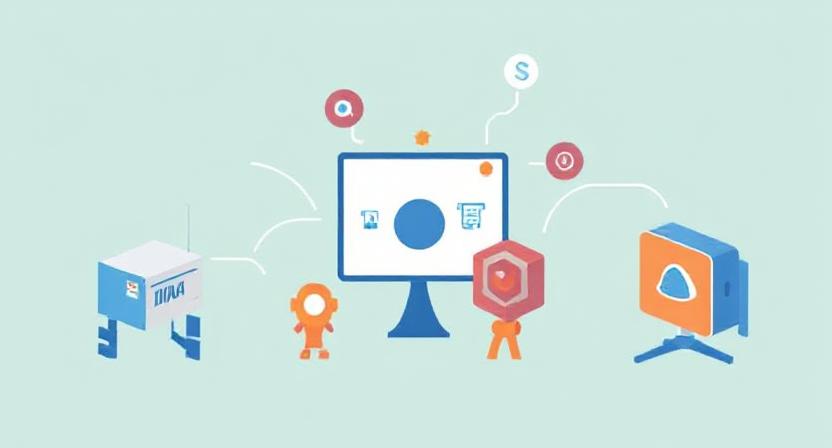The world of artificial intelligence (AI) is evolving rapidly, and large language models (LLMs) are at the heart of this transformation. Indian businesses, researchers, and technology leaders are increasingly relying on LLMs to power innovative solutions. However, selecting the right LLM for a specific application—be it Retrieval-Augmented Generation (RAG), multi-agent systems, or vision-related tasks—is often challenging. This article presents three practical frameworks that will help readers make informed decisions, optimize investments, and achieve scalable results.
Why Choosing the Right LLM Matters
The demand for generative AI solutions in India is booming. According to NASSCOM, the Indian AI market is projected to reach $17 billion by 2027, with generative AI being a key driver. Yet, businesses often face hurdles in selecting the right model:
- High computational costs
- Limited fine-tuning options
- Varying capabilities across models
- Concerns about accuracy, hallucinations, and reliability
A structured selection framework ensures that organizations avoid costly mistakes and align AI investments with business goals.
Framework 1: Selecting LLMs for RAG
Retrieval-Augmented Generation (RAG) integrates external data sources with LLMs to provide more accurate and context-rich responses. This is particularly useful for Indian enterprises in healthcare, legal tech, finance, and education.
Key Factors to Consider
- Context Relevance: How well does the LLM integrate external data into its reasoning?
- Latency: Can it provide quick results for customer-facing applications?
- Scalability: Does it support large-scale document indexing?
- Adaptability: Can it handle Indian languages like Hindi, Tamil, or Bengali?
RAG Evaluation Framework
| Criteria | Weightage | Example Model Strengths |
|---|---|---|
| Data Integration | 30% | GPT-4 excels at connecting with APIs |
| Domain Adaptability | 25% | Cohere strong in enterprise use cases |
| Multi-language Support | 20% | Google PaLM 2 handles Indian languages |
| Cost Efficiency | 25% | Open-source models reduce expenses |
Real-World Example: An Indian legal-tech startup used a RAG-powered LLM to build a case-law retrieval tool. By integrating with a vast database of judgments, they reduced research time by 40%, saving both money and manpower.
Framework 2: Selecting LLMs for Multi-Agent Systems
Multi-agent systems use multiple AI agents that collaborate to achieve complex goals. They are vital for autonomous decision-making, workflow automation, and smart customer service bots.
Key Factors to Consider
- Collaboration Ability: Can the model handle agent-to-agent communication?
- Decision-Making Reliability: Does it maintain consistency across multiple agents?
- Security & Compliance: Is it aligned with Indian data protection laws?
- Flexibility: Can agents be customized for industry-specific tasks?
Multi-Agent Evaluation Framework
| Criteria | Weightage | Example Model Strengths |
| Communication Handling | 30% | Anthropic Claude excels in dialogue chains |
| Decision Reliability | 25% | GPT-4 strong in logical reasoning |
| Security Compliance | 25% | Llama 2 offers on-prem deployment options |
| Customizability | 20% | Hugging Face open-source agents adaptable |
Real-World Example: A Bengaluru fintech company deployed a multi-agent LLM system for fraud detection. Agents collaborated to analyze transactions, cutting fraud cases by 35% within six months.
Framework 3: Selecting LLMs for Vision Tasks
When it comes to computer vision tasks, LLMs that integrate with vision models provide unmatched potential. From medical imaging to smart retail solutions, these models are redefining industries in India.
Key Factors to Consider
- Image-Text Alignment: Can the model understand both text and visuals effectively?
- Accuracy in Complex Scenarios: How well does it perform on real-world Indian data sets?
- Hardware Requirements: Does it need high-end GPUs for deployment?
- Fine-Tuning Flexibility: Can it adapt to domain-specific vision tasks?
Vision LLM Evaluation Framework
| Criteria | Weightage | Example Model Strengths |
| Multimodal Alignment | 30% | GPT-4V strong in combining vision & text |
| Domain-Specific Tuning | 25% | OpenFlamingo excels in research adaptability |
| Cost & Hardware Needs | 25% | Smaller vision models cheaper to deploy |
| Accuracy on Local Data | 20% | Fine-tuned models on Indian datasets |
Real-World Example: An Indian hospital chain used a vision-enabled LLM for radiology scans. The system reduced diagnostic errors by 18%, improving patient outcomes and boosting efficiency.
Actionable Insights for Indian Businesses
- Start Small, Scale Later: Begin with open-source LLMs for proof-of-concepts.
- Invest in Fine-Tuning: Customize models with domain-specific data.
- Prioritize Indian Languages: Ensure inclusivity by supporting regional languages.
- Track Performance Metrics: Use tools like Google Analytics 4 to measure model performance and ROI.
- Focus on Compliance: Align deployments with India’s upcoming Digital Personal Data Protection Act (DPDP Act 2023).
Conclusion: Building a Future-Ready AI Strategy
India’s AI revolution is just beginning, and choosing the right LLM is a critical step in staying ahead. By following these three structured frameworks, businesses can:
- Reduce costs
- Enhance reliability
- Accelerate innovation
Whether you are building RAG-powered search tools, multi-agent decision systems, or vision-enabled healthcare solutions, the right LLM will define your success.
👉 Take Action Today: Start by evaluating your AI goals against these frameworks, test with small pilot projects, and scale with confidence. The future of AI in India is bright—make sure your business is ready to shine.
